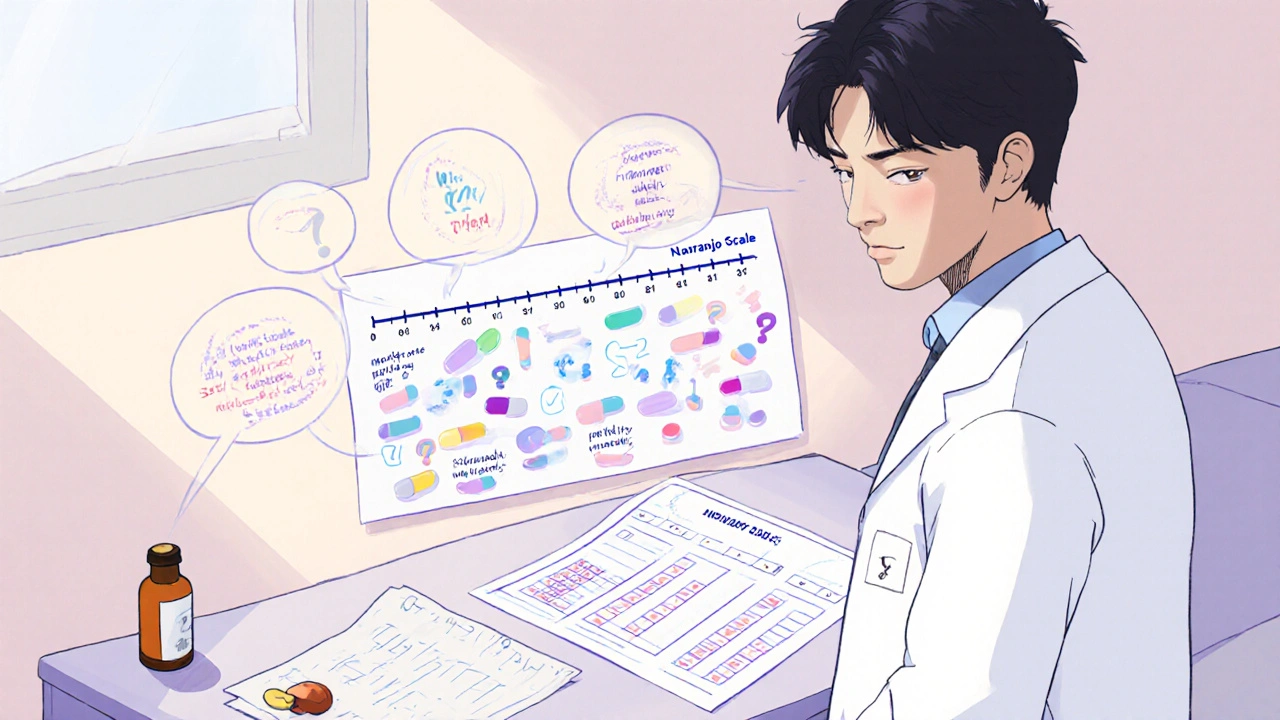Naranjo Scale: What It Is and How It Predicts Drug Side Effects
When you take a new medication and something weird happens—dizziness, rash, nausea—how do you know if it’s the drug or just bad luck? That’s where the Naranjo Scale, a standardized tool used by clinicians to assess whether a drug caused an adverse reaction. Also known as the Naranjo Adverse Drug Reaction Probability Scale, it turns guesswork into a clear, numbered score. It’s not magic. It’s a simple questionnaire with 10 yes-or-no questions that doctors and pharmacists use to figure out if your symptoms are actually caused by the medicine you’re taking.
The Naranjo Scale doesn’t just ask if the reaction happened after taking the drug. It digs deeper: Did the reaction go away when you stopped the drug? Did it come back when you took it again? Are there other possible causes? Each answer adds or subtracts points, and the final score tells you if the reaction is definite, probable, possible, or doubtful. This isn’t just paperwork—it’s what helps doctors decide whether to stop a drug, switch it out, or monitor you closer. If you’ve ever been told, ‘This side effect might be from the pill,’ the Naranjo Scale is probably what they used to come to that conclusion.
It’s used everywhere—from hospitals to clinical trials to pharmacy reviews. You’ll find it referenced in studies on statins, antibiotics, antidepressants, even pain meds. The posts below cover real cases where this scale matters: like when someone on atorvastatin develops erectile dysfunction, or when dapsone causes skin issues, or when brimonidine tartrate triggers eye irritation. Each of those reactions could be flagged, scored, and analyzed using the Naranjo Scale. It’s the quiet backbone behind many of the safety discussions you read about.
You don’t need to be a doctor to understand it. If you’ve ever wondered whether your side effects are normal or dangerous, the Naranjo Scale gives you a framework to ask better questions. It’s not about blaming the drug—it’s about finding the truth so you can stay safe. Below, you’ll find real-world examples where this tool made a difference in treatment choices, patient care, and medication decisions. Whether you’re managing your own health or supporting someone else, knowing how this scale works puts power back in your hands.
Naranjo Scale Guide: Assessing Adverse Drug Reaction Causality
Learn how the Naranjo Scale works, score adverse drug reactions, compare it with other tools, and apply it in clinical practice.
